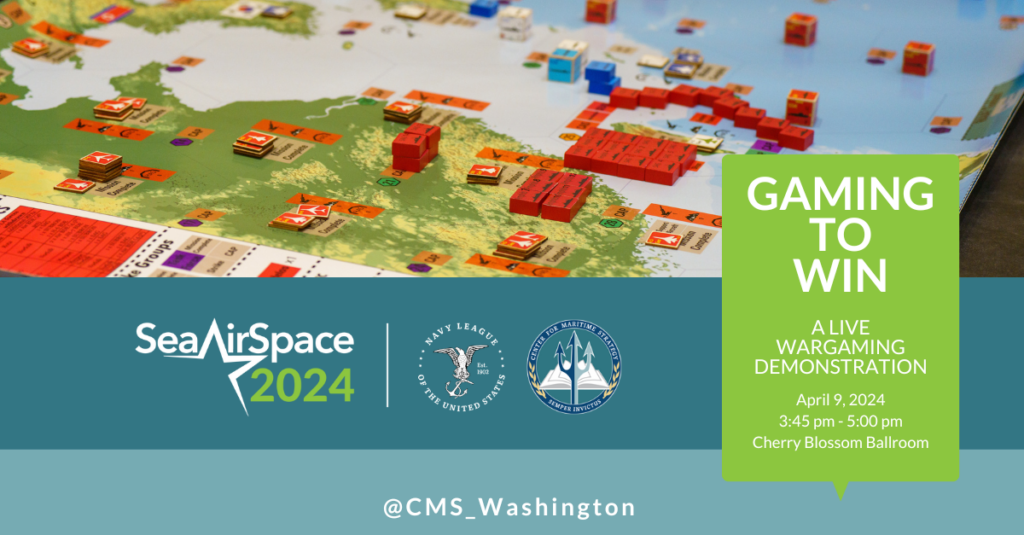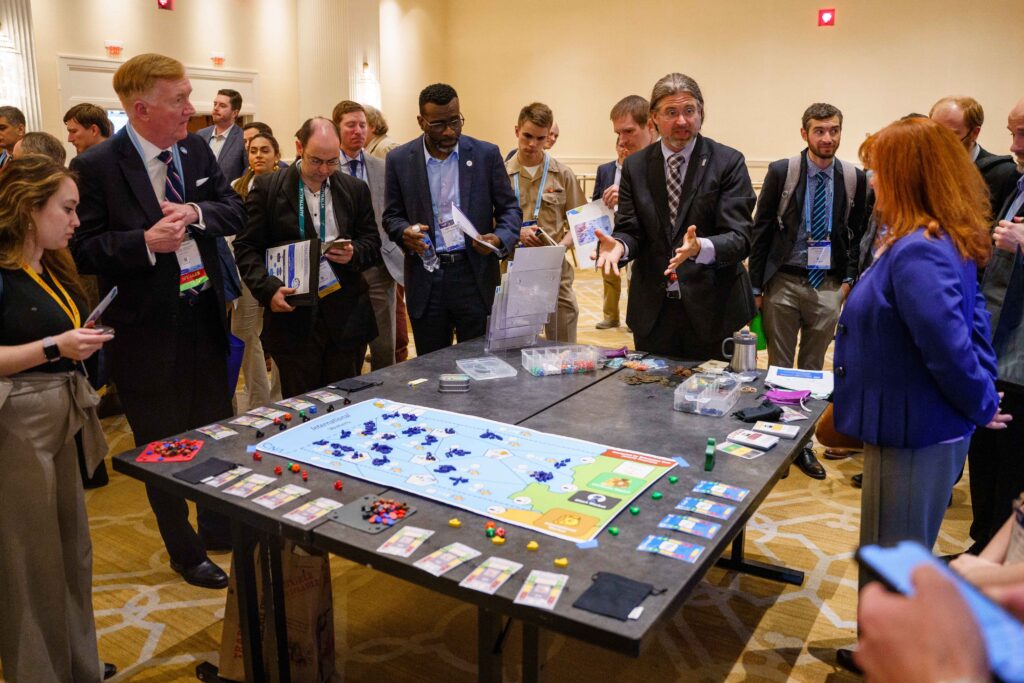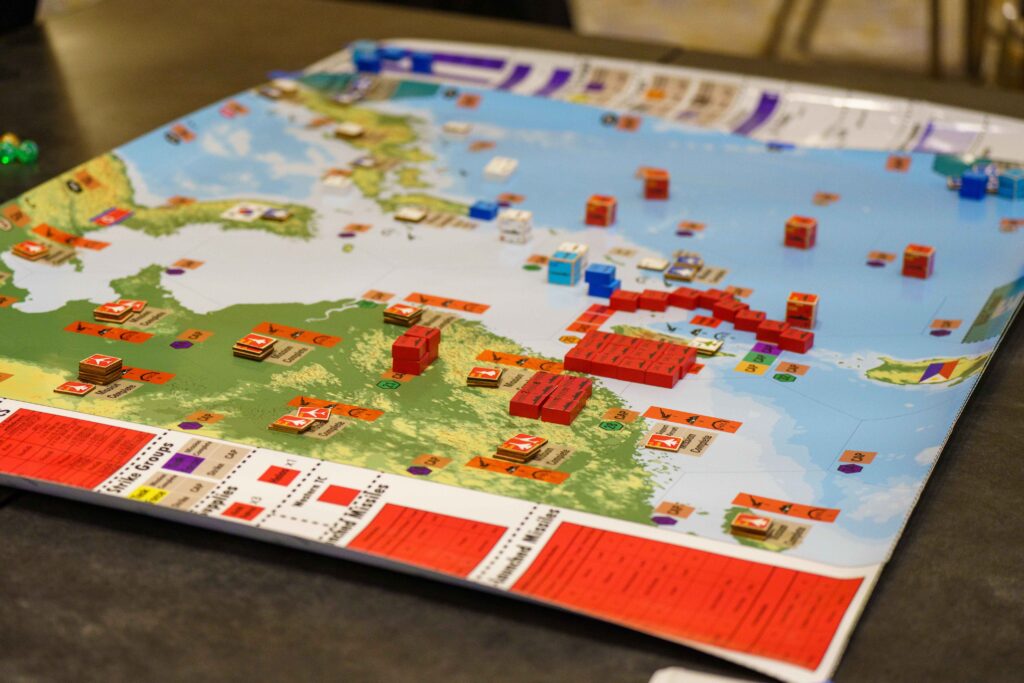
The Center for Maritime Strategy “Gaming to Win” event is in its second year at Sea Air Space and offers a little for everyone within the wider wargaming community.
It features the presidents of the Naval Postgraduate and Naval War College and directors of wargaming from NWC and the Marine Corps University Krulak Center. It also highlights top-flight wargames and their designers who will invite participants to play along, and then be part of a panel on the design and use of games.
The first panel on wargaming will Tuesday, April 9 from 2:45 to 3:45 p.m., followed by an interactive wargaming demonstration from 3:45 to 5:00 p.m. and a second panel from 5:00 to 5:45 p.m., all in the Cherry Blossom Ballroom.

While the panel is called “Gaming to Win,” that is really not what wargames actually do for military commanders and civilian leaders. They perform a vital role in testing assumptions that commanders might possess, as well as offering them the opportunity to explore multiple “what if” scenarios. The late Peter Perla, a famous wargamer, described them as “a dynamic representation of conflict or competition, in a synthetic environment in which people make decisions and respond to the consequences of those decisions.” Wargames do not answer the question of which side will win, or what weapon system(s) are most effective in war. War games build confidence or raise doubts in existing plans. They are a useful tool in evaluating plans but come with limitations that are not always apparent.
Limitations on Wargaming
Some wargame results are interpreted as the “sure path to victory,” or the “inevitable road to defeat” depending on who reads the results and how they interpret them. Wargame results are sometimes seen as either confirming the rise of a specific weapon system or the condemnation of another to obsolescence. These are false interpretations of game results. First, wargames are only as “good” as their input data. That not only includes order of battle being correct, but also, when available, aspects of gaming that the Naval War College calls “the intangible aspects of military planning.” How “ready is any one opponent ship, aircraft, or submarine in terms of material readiness? Can that platform perform its intended mission as designed?

What looks good on paper is not always what it appears. The Russian missile cruiser Moskva was generally rated by Cold War and 1990s-era wargames as able to sustain at least four hits from a medium-sized cruise missile like the U.S. Harpoon weapon and remain afloat. In the real world, the Moskva was sunk by two such weapons, with some reports suggesting the Russian crew immediately abandoned the stricken vessel and did not undertake damage control actions to save her.
Another intangible aspect of wargame design and conduct is the leadership and conduct of the Red Cell, the team of experts who simulate what the opposing forces do. This has in some cases been a past challenge. From the late 1940s to the late 1970s, U.S. Navy leaders believed the growing force of Soviet submarines had only one main purpose, and that was to attack NATO resupply routes from North America to Europe. Russian leaders like fleet commander Admiral Sergei Gorshkov proclaimed the Soviet navy would confront Western navies on the high seas. The large German submarine fleets of World Wars I and II were designed to break Allied supply routes across the Atlantic. Why else would the Soviets build such a force? Intelligence gathered from wiretaps on Soviet undersea communications cables in fact revealed the Soviet navy’s main purpose for its submarines was defense of its ballistic missile submarine force and the protection of the Soviet Union from nuclear attack by Western naval forces. Soviet doctrine said the war would be over before the West could even consider reinforcing NATO by sea.
Getting all of these aspects of wargaming as accurate as possible from the start is essential to setting the stage for game results that can be used by commanders to evaluate plans and the systems to execute them in both peace and war. Wargaming is pursued with victory as the goal, but if it is not sourced with accurate information, it can be a futile exercise.



